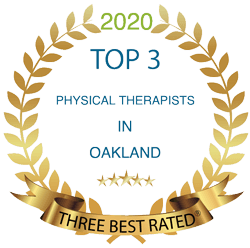Dry needling was inspired by traditional Chinese medicine and has been adopted by many Western medicine doctors over the years. The origins of dry needling date back to the 1940s, with the dry needling techniques used today being developed in 1979.
At first glance, it may appear that dry needling and acupuncture are the same. However, the only thing they have in common is the needle used in both techniques. This article will tell you what dry needling is, the history of the procedure, and its benefits.
What is Dry Needling?
Muscles can develop trigger points, which are basically muscle knots. These trigger points can be very painful and sensitive and can cause referred pain, which is pain affecting another part of the body.
During dry needling, your physical therapist inserts small filiform needles into these trigger points to stimulate the tissue. When being needled, you may experience muscle aches or soreness and a twitch when the needle is inserted into your muscle. Your physical therapist will insert the needle at different depths and for various amounts of time, depending on how long you’ve been in pain and what type of pain is being treated.
Body movement is affected by pain. It is believed that dry needling will change how your muscles and brain communicate to help your system return to a normal movement pattern.
What Pain Dry Needling Treat?
Dry needling will be used in conjunction with other therapy methods, such as manual therapy, exercise, or heat therapy. It can increase your range of motion which may be limited because of scar tissue or tight muscles.
Other conditions dry needling may help with include:
- Problems with joints
- Tendinitis
- Migraines and other tension headaches
- Problems with the mouth or jaw
- Disk and spine problems
- Whiplash
- Disorders caused by repetitive motion, such as carpal tunnel syndrome
- Pelvic pain
- Night cramping
Who Should Avoid Dry Needling?
While dry needling is a safe treatment option, some people should avoid dry needling treatments. These people include:
- People on blood thinners
- People who have recently had surgery
- Pregnant women
- People who don’t fully understand the treatment
- People who are afraid of needles
History of Dry Needling
In the early 1940s, Dr. Janet Travell proposed injections into myofascial trigger points to reduce pain. Initially, the needles were inserted to inject substances such as analgesics, corticosteroids, and saline. This method is referred to as “wet” needling.
Dr. Travell worked with Dr. David Simon to identify trigger points in the human body. This was the first use of modern-day dry needling. They found that dry needling had the same results. This was confirmed in a 1979 study led by Dr. Karel Lewit.
Dr. Lewit’s study emphasized that the effect of needling was separate from the substance that was injected in wet needling. Since then, many studies have found that there is no difference between wet needling and dry needling when treating musculoskeletal pain.
Since then, dry needling has quickly evolved into a technique used by many specially trained physical therapists, medical doctors, and chiropractors. By removing unnecessary medication, and the side effects associated with such medicines, dry needling is an effective, minimally invasive, cost-effective way to help alleviate pain.
Benefits of Dry Needling
From athletes to people who are recovering from a car accident, anyone with body pain can benefit from dry needling. Some of the benefits of dry needling include:
- It accelerates the natural healing process of your body —. When the needle is inserted into a trigger point, your muscles relax, blood flow increases, inflammation decreases, and it triggers a healing response. It can also improve nerve communication and triggers your body to release endorphins, which are natural pain relievers.
- Increased blood flow — Stiff muscles loosen up, and joint pain is eased as blood flow increases, and oxygen circulates within your body.
- Relieves muscle tension — As muscle tension is released, it will also reduce your pain. When your muscles twitch when the needle is inserted, that’s a sign that the therapy is working.
Turn to UpSlope Physical Therapy & Performance for Dry Needling Near Fort Collins, CO
Although dry needling is somewhat of a newer practice, if you’re dealing with chronic pain, dry needling may be the answer you’ve been looking for to manage and reduce your pain. Your dry needling treatment should be part of your overall treatment plan. Your physical therapist will be able to create a customized treatment plan for you.
At UpSlope Physical Therapy & Performance, we help active adults and athletes quickly recover from pain or injury to get them back to doing what they love to do. In typical orthopedic clinics, a physical therapist sees multiple patients simultaneously, leaving less time with you and treatments that may not meet your needs.
Not at UpSlope Physical Therapy & Performance! You will receive one-on-one time with a Doctor of Physical Therapy specializing in sports medicine.
Contact us today, and let us help you reach your goals.




